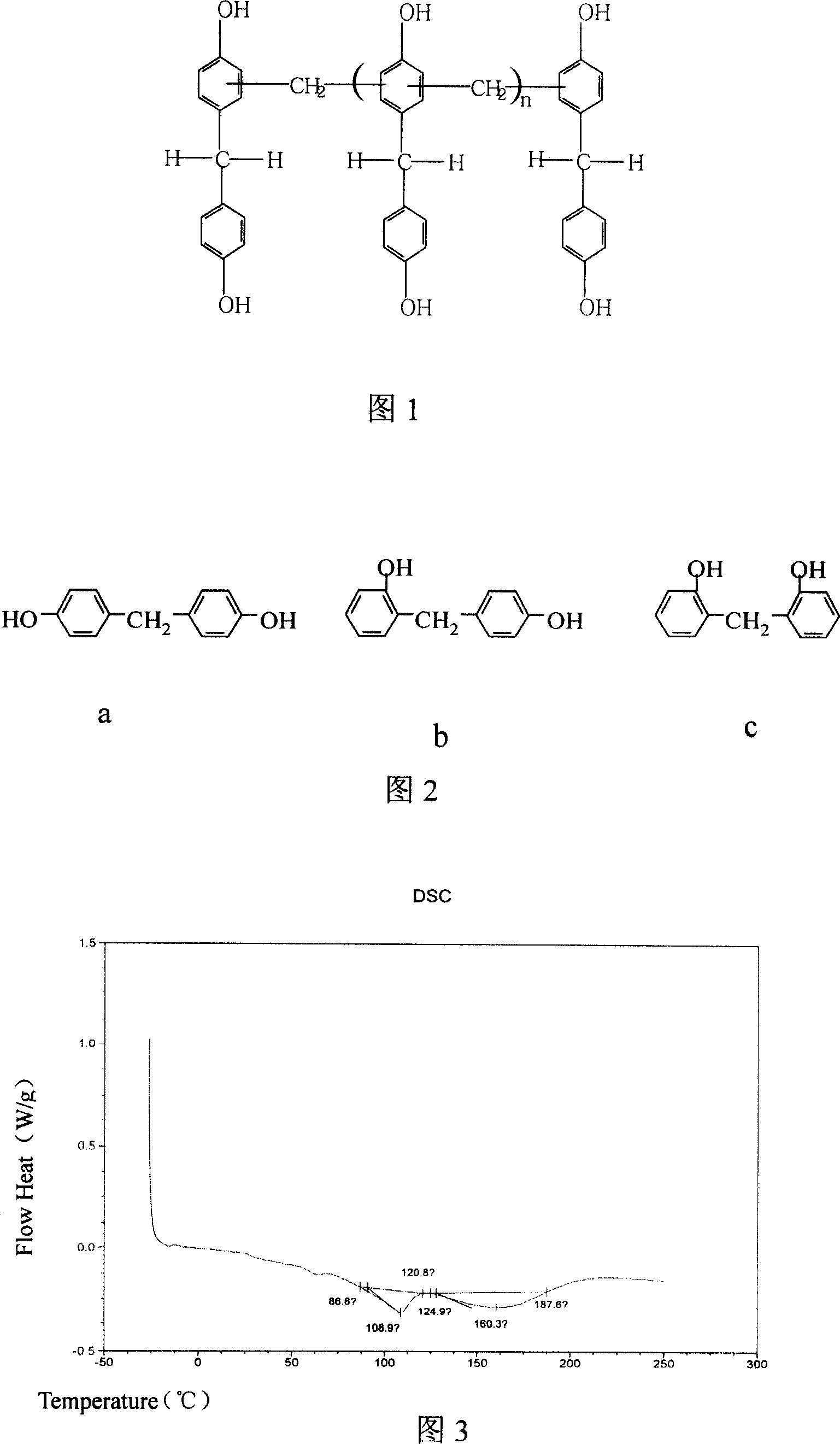Linetype bisphenol F phenolic resin and preparation method thereof
A phenolic resin and novolac bisphenol technology, applied to the field of in-line bisphenol F phenolic resin and its preparation, can solve the problems such as the influence of the internal quality of printed circuit boards, the reduction of impact resistance, and the influence of the appearance quality of printed circuit boards.
- Summary
- Abstract
- Description
- Claims
- Application Information
AI Technical Summary
Problems solved by technology
Method used
Image
Examples
Embodiment 1
[0028] Step 1: Add 188g of raw material phenol, 138.4g of phosphoric acid with a mass fraction of 85%, and 50g of water into a 1000ml three-neck flask equipped with a thermometer, a stirrer, and a constant pressure dropping funnel according to the proportioning ratio. Start the agitator to mix evenly, then raise the temperature to 35°C±2°C, add 32.4g of formaldehyde with a mass fraction of 37% dropwise at a constant speed within 6 hours, add 80g of methyl isobutyl ketone to extract bisphenol F, phenol and acid A mixture of water, separate the mixture containing phosphoric acid and water in the lower layer for recycling, wash the product with distilled water until the pH is 7, vacuum dehydrate and solvent at 100 ° C ~ 140 ° C, -0.06 MPa ~ -0.09 MPa, and The excess phenol was recovered to obtain bisphenol F as a white solid.
[0029] Step 2: In 70.4g of bisphenol F, add 20g of formaldehyde with a mass fraction of 37%, 0.8g of oxalic acid, 1g of hydrochloric acid and 100g of wate...
Embodiment 2
[0041] Add 188g of raw material phenol, 115.3g of phosphoric acid with a mass fraction of 85%, and 27.0g of water into a 1000ml three-necked flask equipped with a thermometer, a stirrer, and a constant pressure dropping funnel, start the stirrer to mix evenly, and then raise the temperature to To 50°C±2°C, add 54.1g of formaldehyde with a mass fraction of 37% dropwise within 4 hours at a constant speed, add 100g of methyl isobutyl ketone to extract bisphenol F, and separate the mixture of phosphoric acid and water in the lower layer for recycling. Wash the product with distilled water until the pH is 7, carry out vacuum dehydration and solvent at 100~140°C, -0.06MPa~-0.09MPa, and recover excess phenol to obtain white solid bisphenol F.
[0042] Step 2: Add 39.3g of formaldehyde with a mass fraction of 37%, 1.5g of oxalic acid, 0.5g of hydrochloric acid and 130g of water to 113.9g of bisphenol F and heat it up to 80°C±2°C for 3 hours to stop the reaction. Suck out the acid solu...
PUM
| Property | Measurement | Unit |
|---|---|---|
| softening point | aaaaa | aaaaa |
| softening point | aaaaa | aaaaa |
Abstract
Description
Claims
Application Information
 Login to View More
Login to View More - R&D
- Intellectual Property
- Life Sciences
- Materials
- Tech Scout
- Unparalleled Data Quality
- Higher Quality Content
- 60% Fewer Hallucinations
Browse by: Latest US Patents, China's latest patents, Technical Efficacy Thesaurus, Application Domain, Technology Topic, Popular Technical Reports.
© 2025 PatSnap. All rights reserved.Legal|Privacy policy|Modern Slavery Act Transparency Statement|Sitemap|About US| Contact US: help@patsnap.com

